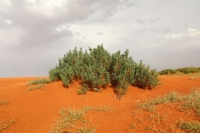
Rhazya Stricta, commonly known as Rhazya, Harmel, or Hamad, is an evergreen and poisonous shrub of the Apocynaceae species. It is found in the Arabian Peninsula. It is cultivated in Riyadh City , the capital of the Kingdom of Saudi Arabia. It is endemic to subtropical regions. Its robust leaves enable its quick adaptation to desert conditions. It is a medicinal plant. Characteristics and attributes of the rhazya shrub The rhazya shrub is known for its fast growth ability. It grows up to one m. ...
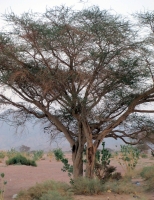
The Umbrella Thorn (Acacia tortilis subsp. spirocarpa, Mimosoideae) is a perennial tree that takes the shape of an inverted triangle. It belongs to the Mimosoideae species. 'Acacia Tortilis' is one of the species cultivated in the Kingdom of Saudi Arabia. These trees are commonly known as 'al-Samar.' The umbrella thorn is endemic to tropical areas. It is cultivated in East Africa, on rocky hills and sand dunes. Its cultivation extends to the Sahara Desert. Characteristics of...
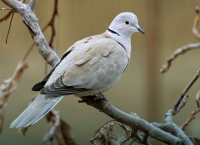
The African Collared Dove , also known as the Barbary Dove (Streptopelia roseogrisea), is a common migratory bird and uncommon visitor and breeding bird in the Kingdom of Saudi Arabia. Habitat of the African Collared Dove Around one million African Collared Doves migrate yearly to the Red Sea, where they breed in Tihama Plains, southwest of the Kingdom, and southern Tabuk , in the vicinity of plains located west of the region's mountains. It annually breeds in the Kingdom where the country...
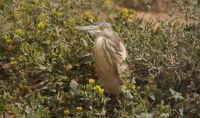
The Little Bittern (Ixobrychus minutus) is a resident bird of the heron species in the Kingdom of Saudi Arabia. Small nesting groups were spotted in al-Asfar Lake in al-Ahsa Governorate in addition to large groups migrating toward the region, including transient birds and winter visitors. Description of the Little Bittern Male little bitterns are known for their greenish-black head, wings, and outer, and middle body parts. Female birds have a darker-colored head, wings, and outer, and middle bo...
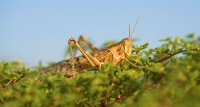
Locusts in the Kingdom of Saudi Arabia (Crocothemis erythraea) are insects of the 'Odonata' of the 'Dragonflies and Grasshoppers (Locusts)' species. They are widespread across the Kingdom. They feed on insects and wild plants. Lifecycle of a locust The spread of locusts is due to the presence of several water-covered areas that enable olive green-colored female locusts to lay eggs within water surfaces upon insemination by male locusts. Eggs hatch, giving birth to hatchlings...
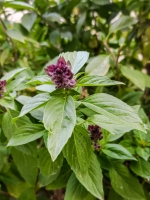
Basil (Ocimum basilicum, Lamiaceae) is a perennial herbaceous perennial plant of the Lamiaceae species. It is endemic to the Middle East, southeastern Europe, and southwestern Asia. It is one of the plant varieties used for landscaping in Riyadh and other regions of the Kingdom of Saudi Arabia. Characteristics of basil The height of basil ranges between thirty and sixty cm. It has a width of about forty cm. It features mostly bright green, rounded, and aromatic leaves with a pleasant odor. Basi...
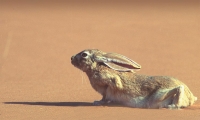
The Cape Hare (Lepus capensis) is a wild animal living in most gravel, sandy, and mountainous desert environments of the Kingdom of Saudi Arabia. Cape hares can adapt to the desert lifestyle to the extent that even the color of their fur matches the color of the environment in which they live to protect themselves from enemies. They are widely found in desert plains and sandy areas of al-Rub' al-Khali (Empty Quarter ), al-Dahna Desert , and al-Nufud al-Kabir Desert , as well as in the plat...
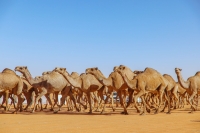
According to the 2022 statistics from the Ministry of Environment, Water, and Agriculture in the Kingdom of Saudi Arabia, the camel population was approximately 1.8 million heads, spread across various provinces of the Kingdom. Several camel breeds are raised, including Majaheem, Maghateer, and Humr categories . The camel owners are estimated to number eighty thousand. The annual consumption is around 76,000 t of camel meat, with an average per capita consumption of 2.2 kg per year. Camels are ...
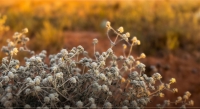
The Felty Germander is an aromatic and wild green tree growing in the regions of the Kingdom of Saudi Arabia. It is found in mountains, valleys, and sandy soils where water flows. It can grow in dry areas. It is used in traditional medicine in the Kingdom. Characteristics of the felty germander The felty germander is a perennial tree. Its height is about forty cm. It features long leaves, ranging from eight to thirty-five mm in length and three to eight mm in width. It bears white flowers, clus...
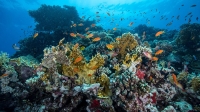
The Red Sea Decade Expedition is a scientific journey launched by the National Center for Wildlife in the Kingdom of Saudi Arabia in February 2022. It aims to conduct the first comprehensive survey of Saudi marine environments in the Red Sea. Objectives of the Red Sea Decade Expedition The expedition aimed to study the diversity and distribution of corals in the deep areas of the Red Sea, investigate biodiversity from the smallest organisms to marine mammals, examine marine life in both deep an...
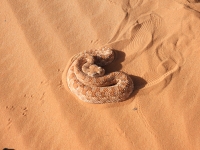
The Saharan Horned Viper or the Desert Horned Viper (Cerastes cerastes) is a reptile of the Serpentes species. It lives in the environment of the Kingdom of Saudi Arabia. It is dubbed as horned because its head is topped with a pair of supraocular horns. It is locally known as 'Umm Junaib.' Characteristics of the Saharan horned viper The Saharan horned viper has a thick body and a triangular head, which is common among venomous snakes. It has a relatively short tail. Its body length r...
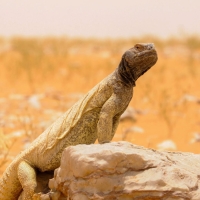
The Egyptian Spiny Tailed Lizard (Uromastyx aegyptius) is a lizard of the Lepidosauria species. It is found in steppes, gravel, and sandy areas of the Kingdom of Saudi Arabia. Characteristics of the Egyptian spiny-tailed lizard The Egyptian spiny-tailed lizard is the largest species of lizard found in the Arabian Peninsula and Sinai. It is referred to as the Egyptian lizard, where its taxonomic name indicates that the first specimen thereof was collected and examined in Sinai, Egypt. It is know...